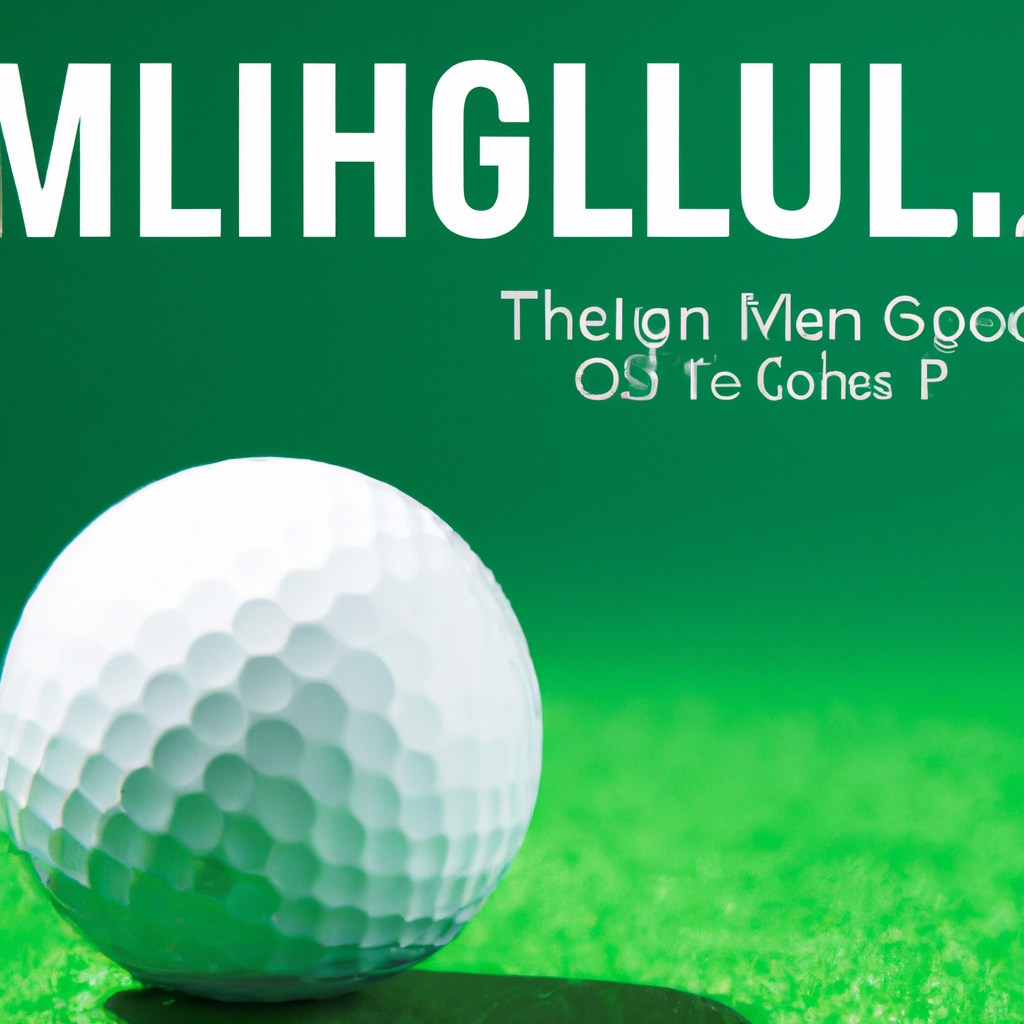We may earn money or products from the companies that may be mentioned in this post.
Have you ever found yourself wishing for a second chance in golf after a poor shot? Well, you’re in luck! In the world of golf, there exists a rule called the Mulligan Rule that allows players to take a do-over on a shot. This article will shed light on the fascinating concept of the Mulligan Rule, exploring how it works and how many mulligans are allowed in a game of golf. Get ready to discover a valuable tool that could potentially transform your golfing experience and help you improve your game!

Understanding the Mulligan Rule in Golf
What is a Mulligan?
A Mulligan, in the context of golf, refers to the informal practice of granting a player a second chance to hit a shot without counting the stroke against their score. It is essentially a do-over, allowing golfers to take another swing after a poor initial shot. Mulligans are not an official rule in golf but are rather a common courtesy extended by players to promote a more enjoyable round.
History of the Mulligan Rule
The exact origins of the Mulligan Rule are a subject of debate among golf enthusiasts. One popular theory traces its roots back to the 1930s when a Canadian golfer named David Mulligan made a habit of taking an extra shot on the first tee, referring to it as a “correction shot.” The story goes that his friends jokingly named this practice a “Mulligan,” and the name stuck, eventually spreading throughout the golfing community.
Official Rules of Golf
Despite its widespread usage, the Mulligan Rule is not an official rule within the sport of golf. The official Rules of Golf, as established by governing bodies such as the United States Golf Association (USGA) and the Royal and Ancient Golf Club (R&A), do not recognize or endorse the Mulligan. According to these governing bodies, each shot taken should count towards the player’s final score, and any retakes are considered violations of the rules.

Usage and Acceptance
While not formally recognized, the Mulligan Rule has become widely accepted and utilized in recreational rounds of golf. Many players, both casual and serious, give themselves the opportunity to take a Mulligan on occasion, especially during friendly matches or outings with friends and family. The rule provides a chance to alleviate frustration from a poor shot and can enhance the overall enjoyment of the game for amateurs.
Benefits of the Mulligan Rule
The Mulligan Rule offers several benefits to golfers, particularly those who are less experienced or playing for pure recreational purposes. Firstly, it reduces the pressure and stress of each shot. Knowing that you have an opportunity for a do-over can help you approach your game with more confidence, leading to improved performance and a greater sense of enjoyment. Additionally, it allows players to correct mistakes and learn from them, contributing to their overall skill development on the course.
Disadvantages of the Mulligan Rule
While the Mulligan Rule has its advantages, there are also some drawbacks to consider. One significant drawback is the potential for abuse. In some cases, players may take advantage of Mulligans excessively, using them to repeatedly improve their score without truly facing the consequences of their initial poor shots. This can lead to inflated scores and an inaccurate representation of a player’s skill level. Moreover, the reliance on Mulligans might hinder golfers from developing the patience and resilience required to improve their game in the long run.
Etiquette and Implementation
When it comes to implementing the Mulligan Rule, it is crucial to adhere to proper golf etiquette. Players should seek consensus from their fellow golfers before utilizing Mulligans. It is generally considered courteous to limit the use of Mulligans to a certain number per round or to specific starting holes. Additionally, Mulligans should only be used during friendly matches and never during competitive tournaments or official rounds where adherence to the official rules is mandatory.
Variations of the Mulligan Rule
As the Mulligan Rule is not standardized, variations exist in how it is applied. Some players set a cap on the number of Mulligans allowed per round, usually between one and three. Others may limit Mulligans to specific types of shots, such as tee shots or only forgiving one bad shot per hole. These variations provide a degree of flexibility while still maintaining the spirit of the practice.
Famous Mulligan Moments
Throughout golf history, there have been several notable Mulligan moments that have captured the imagination of fans and players alike. One legendary incident involved former United States President Bill Clinton, who famously took a Mulligan on the first tee during a game. Such moments not only highlight the informal nature of the Mulligan Rule but also add a touch of humor and camaraderie to the game.
Controversies Surrounding the Mulligan Rule
As with any informal practice, there are controversies surrounding the Mulligan Rule. Some argue that the practice undermines the integrity of the game, as it deviates from the official rules established by golf’s governing bodies. Others argue that Mulligans can disrupt the pace of play, particularly if players take an excessive number of retry shots. These controversies highlight the ongoing debate around the inclusion of the Mulligan Rule within the sport.
In conclusion, while not officially recognized, the Mulligan Rule has become a widely accepted practice in recreational rounds of golf. It provides golfers with a chance to improve their shots without impacting their final score, adding an element of fun and forgiveness to the game. However, it is important to remember that the spirit of golf lies in adhering to the official rules and maintaining proper etiquette. So, embrace the Mulligan Rule in friendly matches but be mindful of its limitations and potential pitfalls. Happy golfing!
